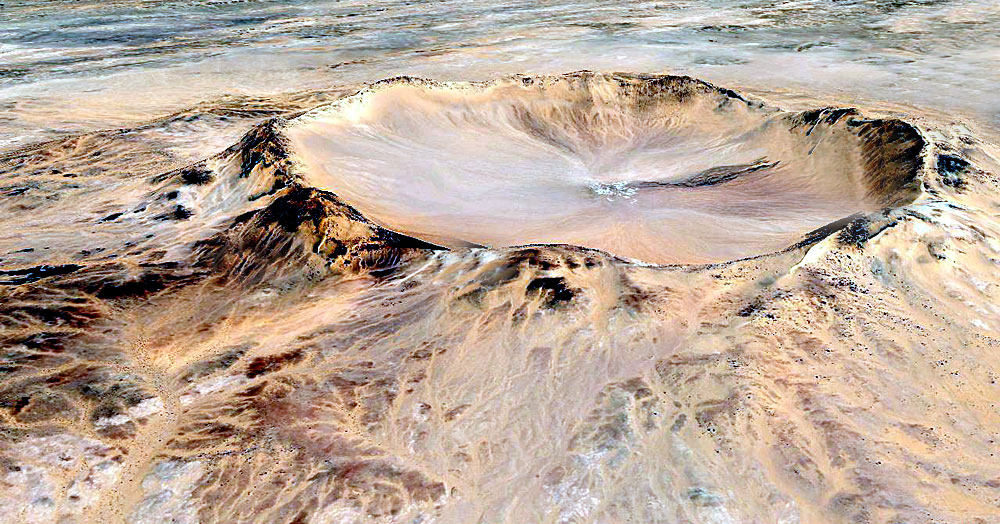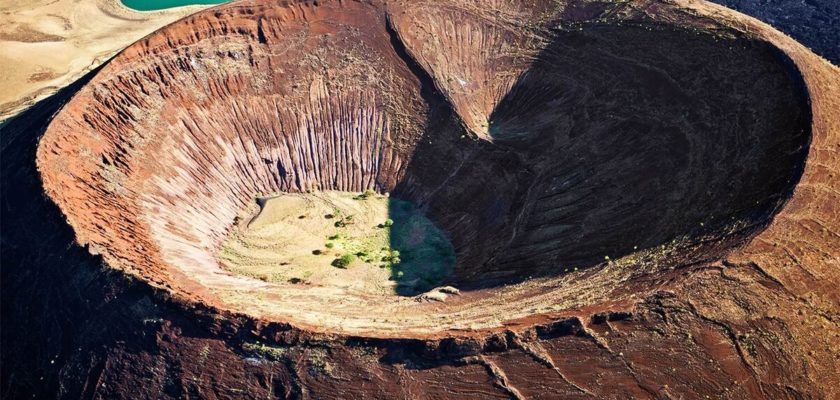The impact crater is a depression in the ground believed to have been caused by a meteorite, asteroid or comet crashes into a planet or a moon. Almost 170 terrestrial impact craters have been identified on our planet. Only the young and relatively small impact craters are featured on this list.
Barringer Crater
Barringer Crater is also simply known as Meteor Crater or Arizona Crater. This crater is the best known and best-preserved impact crater on Earth. Daniel Barringer was the first person to suggest that the crater was produced by a meteorite impact. As a tribute to him, the crater was named the Barringer Crater and it is still privately owned by his family. About 40,000 years ago, The Barringer Crater was formed due to the impact of an iron meteorite, some 50 meters (54 yards) across and weighing several hundred thousand tons. The meteor struck at a speed of 12.8 kilometers per second (28,600 mph).
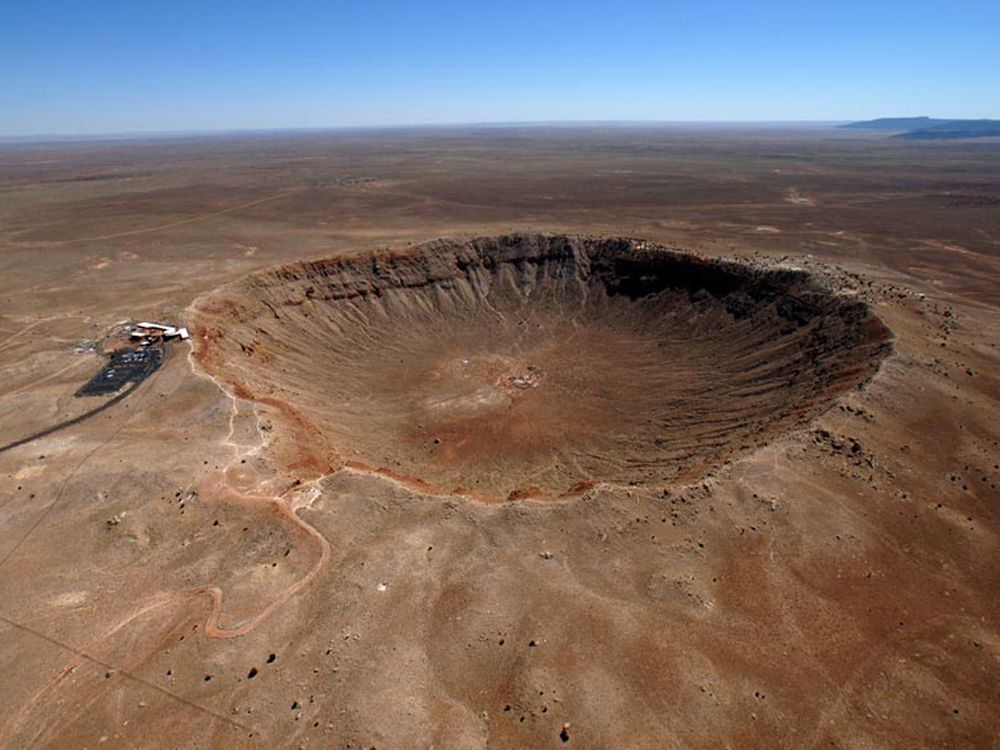
Pingualuit Crater
About 1.4 million years ago, The Pingualuit Crater was created by a meteorite impact that had the force of 8500 Hiroshima-sized atomic bombs. The crater is 3.44 km (2.14 miles) in diameter, which rises 160 meters (520 feet) above the surrounding tundra and is 400 meters (1,300 feet) deep. A 270 meter (890 feet) deep lake formed at the bottom of the crater which contains some of the purest water in the world.
There are no inlets or apparent outlets of the lake, so the water accumulates from rain and snow and is only lost through evaporation. In 1943, the crater was discovered by a US Air Force plane on a meteorological flight. In the local Inuit language, Pingualuit means “where the land rises”.

Lonar Crater Lake
About 50,000 years ago when a meteorite hit the surface, The Lonar Lake in Maharashtra was formed. In the resulting basaltic rock formation, a saltwater lake has evolved with a mean diameter of 1.2 kilometers (3,900 feet) and is about 137 meters (449 feet) below the crater rim. There are numerous temples that surround the lake. The temple of Daityasudan is located at the center of the Lonar town, which was built in honor of Vishnu’s victory over the giant ‘Lonasur‘. The surrounding vegetation of the crater is a treat for birdwatchers and also the crater itself is a fun trek.
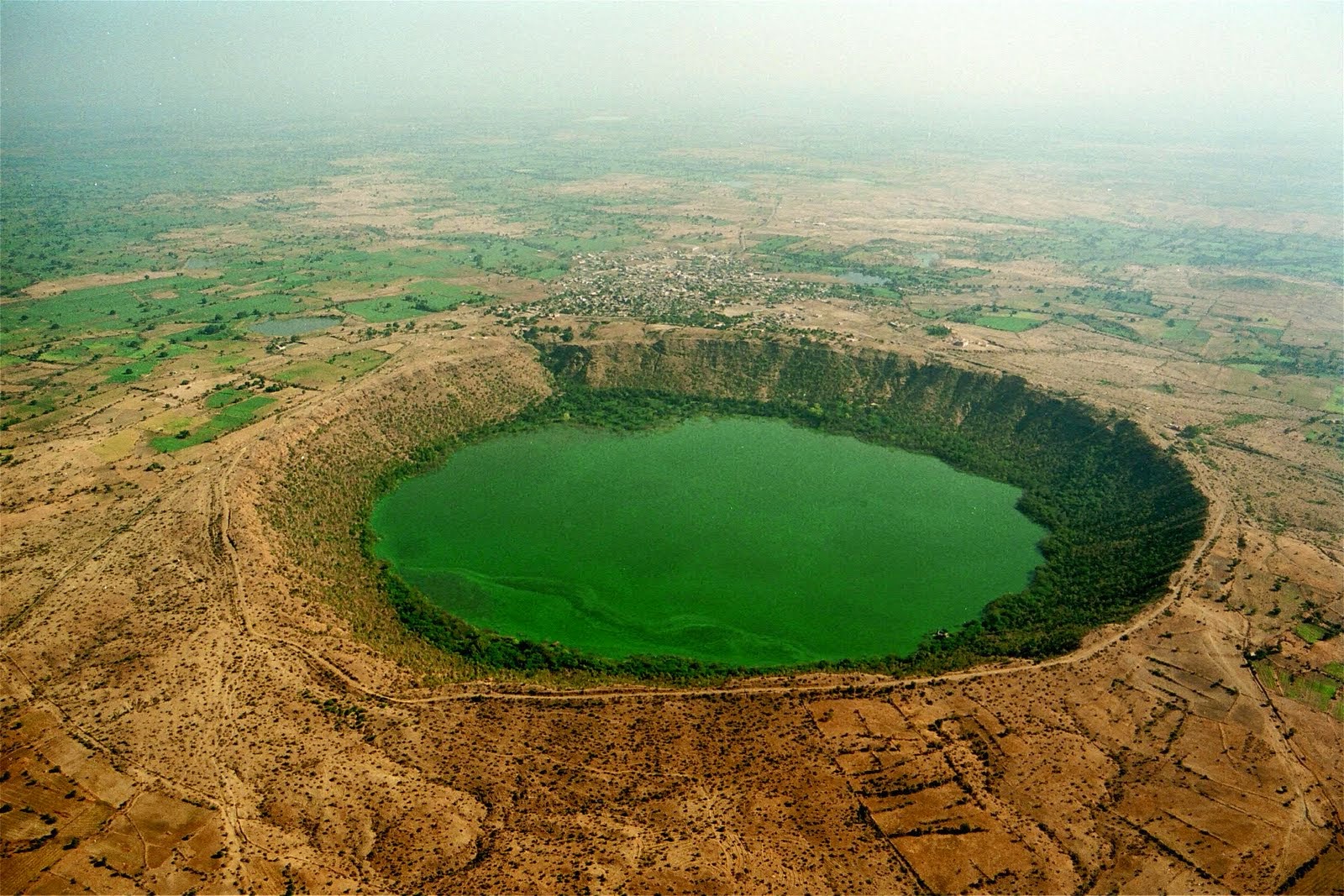
Tenoumer Crater
The Tenoumer Crater is nearly a perfect circle which is located in the Western Sahara Desert, Mauritania. The crater is 1.9 kilometers (1.2 miles) wide, and sports a rim 100 meters (330 feet) high. The cause of this crater has been long debated by the modern geologists.
Some of them considered a volcano as the cause of the crater. The closer inspection of the structure revealed that the crater’s hardened “lava” was actually rock that had melted from a meteorite impact. Roughly between 10,000 and 30,000 years ago this impact occurred.
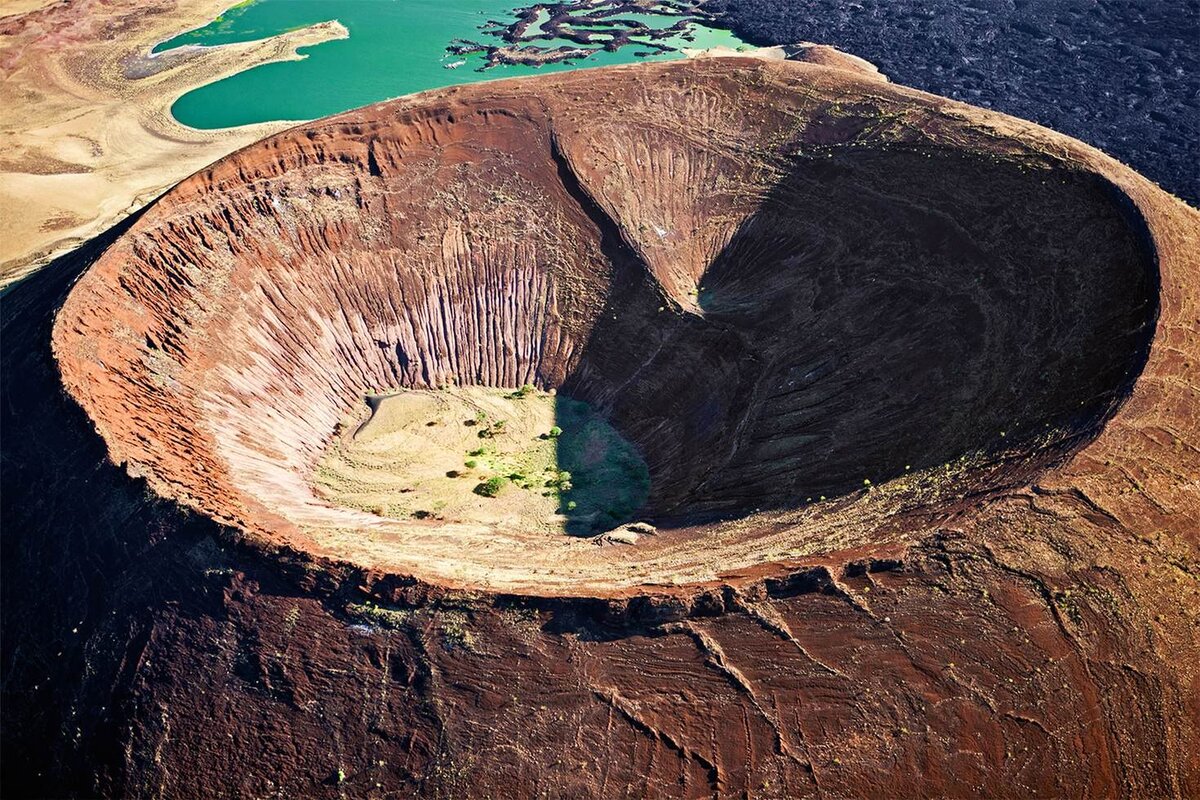
Tswaing Crater
The Tswaing Crater was created about 220,000 years ago by a chondrite or stony meteorite, which is some 30 to 50 meter in diameter that hit the earth. There is a small lake in the center of the crater that is filled by a spring and rainwater. Stone tools from the Stone Age show that in order to hunt and collect salt, the crater was regularly visited by people. The local Tswana tribes call the region Tswaing which means “Place of Salt” while the European settlers named the region Zoutpan (Salt Pan).

Roter Kamm Crater
The Roter Kamm crater is located in the Namib Desert, Namibia. The crater is about 2.5 km (1.6 miles) in diameter and is 130 meters (400 feet) deep. About 3.7 million years ago, it was created by a meteor with the size of a large vehicle. Even though the crater is clearly visible, but at least 100 meters (300 feet) thick sand deposits cover its floor. The crater gives the impression of a Martian surface rather than that of our own planet due to the combination with the orangey-red color of the Namib Desert.
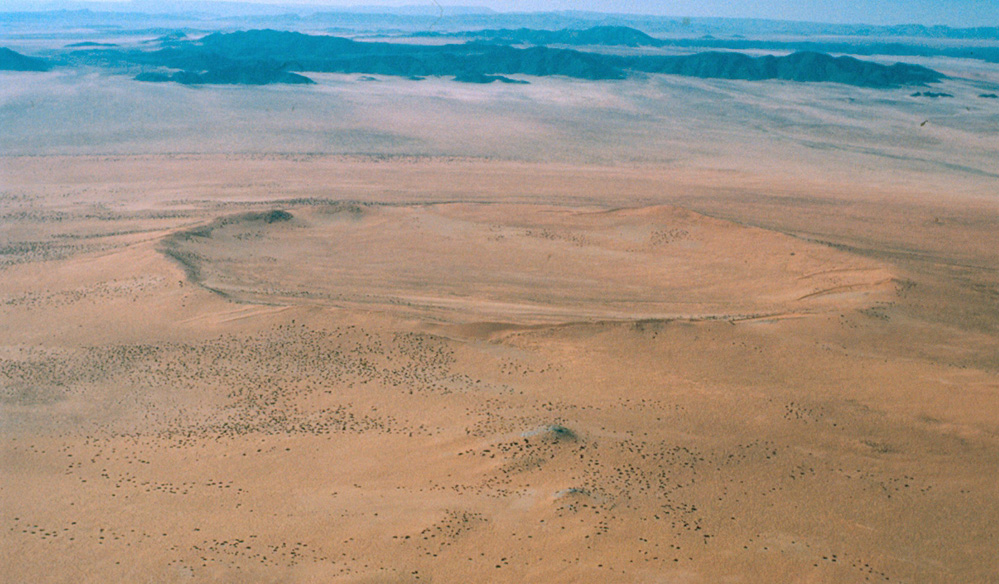
Amguid Crater
Located in a remote area in southwestern Algeria, the Amguid Crater is a relatively young crater. The crater has formed as the result of a meteor impact about 100,000 years ago. The 30 meters (100 feet) deep meteorite impact crater is perfectly circular and it is 450 meter (1476 feet) in diameter. There are blocks of sandstones that enclose the top of the rim. These sandstones are several meters in diameter. Filled with compacted eolian silts, the center of the crater is flat.
